#Ayse Humasah Sultan
Explore tagged Tumblr posts
Text
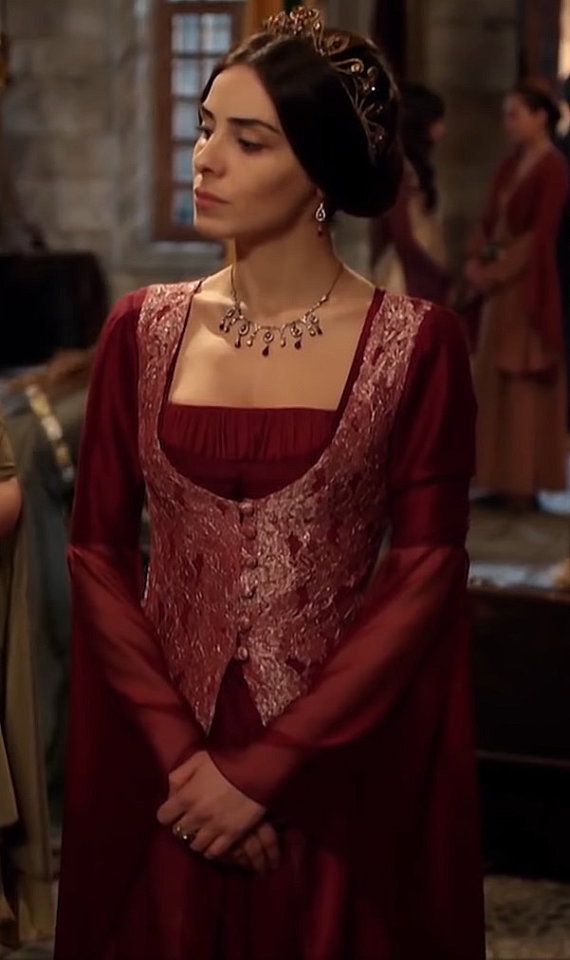




This pink and silver kaftan was first worn by Mahidevran Sultan in the twenty-third episode of the second season of Magnificent Century. It appears twice in the third season, first on Fatma Hatun in the fourth episode and then on Mihrimah Sultan in the thirtieth episode. The kaftan is also worn by Şehzade Cihangir's unnamed concubine in the tenth episode and Mihrimah's daughter Ayşe Hümaşah Sultan in the final episode of the fourth season.
#Muhteşem Yüzyıl#Magnificent Century#period drama#costume drama#historical drama#Mahidevran Sultan#Fatma Hatun#Mihrimah Sultan#Mihrimah Sultan (Daughter of Hürrem)#Unnamed Harem Members#Ayşe Hümaşah Sultan#Ayse Humasah Sultan#Ayşe Hümaşah Sultan (Daughter of Mihrimah)#Hümaşah Sultan#Humasah Sultan#Hümaşah Sultan (Daughter of Mihrimah)#reused costumes#recycled costumes
19 notes
·
View notes
Photo
Teenage Wyn right there
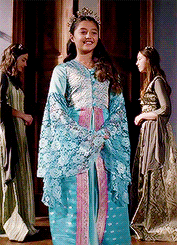
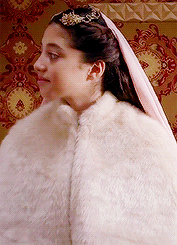
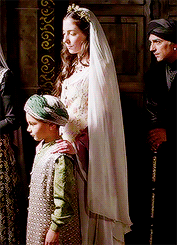






Ayşe Hümaşah Sultan + Costumes (requested by anonymous)
#magnificent century#muhtesem yuzyil#ayse humasah sultan#lotr fancast#the lady of Ithilien#oc: éowyn (daughter of elenna and eönwë)
316 notes
·
View notes
Text

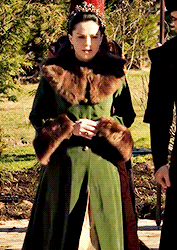

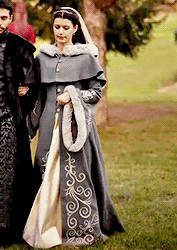

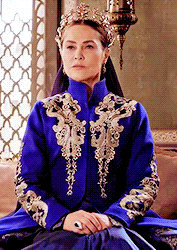


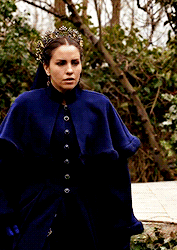
MAKE ME CHOOSE MEME | @palaceoftears asked - winter clothes in mc or mck
#magnificent century: kosem#perioddramaedit#weloveperioddrama#onlyperioddramas#humasah sultan#safiye sultan#gevherhan sultan#farya sultan#kosem sultan#ayse sultan#handan sultan#*humasah sultan#*safiye sultan#*gevherhan sultan#*farya bethlen#*kosem sultan#*ayse sultan#*handan sultan#*make me choose meme
124 notes
·
View notes
Note
DAUGHTERS OF MURAD III
As we all know, Murad III was the sultan who had thirty daughters when he died, but in 1598 seventeen or eighteen daughters died due to plaque, so there were twelve or thirteen who were left. There were several daughters of Safiye Sultan, and much more daughters of concubines, who were married in mass ceremony in summer of 1613.
When Murad ascended the throne, Venetian ambassadors started to report about his family composition. Let’s now see reports from early reign of Murad III:
Report from Giacomo Soranzo from 1576 (page 205) (provided by Maria Pia Pedani)
Sultan Amorat III di questo nome, et XIII imperator de Turchi, è al presente di età di 33 anni. Ha una figliola di XII anni et dui figliuoli maschi, il primo, sultan Mehemet, di IX anni, et l’altro sultan Soleiman di VIII.
Report from Giovanni Correr from 1578 (page 239) (provided by Maria Pia Pedani)
Sarebbe, dicono, inclinato per natura a disordinar con le donne, perché si diletta grandemente della conversation loro; pure, con tanta commodità et quantità che n’ha, si tien per fermo che ’l sia contento della sola moglie, la qual se ben non le ha per ancora fatto chebin, che tanto vuol dire come indotata et sposata, ama grandemente, né mai dorme lontano da lei, et con essa ha tre figliuoli, una femina de XI anni et dui maschi, il primo di IX, et l’altro di V anni.
Report from Giacomo Soranzo from 1584 (page 268) (provided by Maria Pia Pedani)
Questo sultan Mehemet, solo et unico figliolo maschio di Sua Maestà con doi figliole femine, se ben ha havuto altri quattro figlioli maschi, che son morti, tutti di una istessa madre, è hora in età di XVI in XVII anni, et la prima figliola di XIIII dissegnata, come si crede, a Ibrain bassà, et [6] l’altra più picciola.
Report from Paolo Contarini from 1583; book Relazioni degli ambasciatori veneti al Senato (page 243):
Ha Sua Maesta un figliuolo unico maschio chiamato Sultan Memet, di eta d’ anni 18, e che l’ anno passato fu ritagliato, com’ e noto alla Serenita Vostra, di maggior vita e di piu bella statura del padre, di color olivastro, e negli occhi mostra esser crudele; s’ intende ch’ egli abbia animo grande, e che spesso biasma il padre, perche dipende dal consiglio delle done e non va in persona alla guerra. Ha pure Sua Maesta due figliuole, una di eta di quattordici anni, che, come ho detto, e destinata per moglie ad Ibraim bassa, e l’ altra e di anni dieci, ne per ancora e destinata ad alcuno, sebben si ragiona che la sultana madre abbia intenzionne di farla dar per moglie a Mamut aga, capigi bassi del serenissimo Signor, allievo e molto favorito di Sua Maesta.
--------------------------------------
As far as I understood from reports above:
Beside Mehmed, Safiye gave birth to four sons who died before 1584; one of them was named Süleyman who was year younger than Mehmed, thus being born in 1567. Also, Mahmud and Selim (who were born respectively in 1572 and 1579; see A Comparison of Seyyid Lokman’s Records of the Birth, Death and Wedding Dates of Members of Ottoman Dynasty (1566-1595) with the Records in Ottoman Chronicles by Pazan Ibrahim), were also sons of Safiye, according to birth dates.
Safiye for sure had at least two daughters; Ayşe, who was four years younger than her brother Mehmed, thus being born in 1570, and Fatma, who was four years younger than her elder sister and eight years younger than her brother, thus being born in 1574. Beside them, it seems that Safiye had one more daughter, who was older from Mehmed two to three years, thus being born in 1563-1564.
From later reign of Murad III we have also some informations:
Report from Lorenzo Bernardo in 1590 provided by Maria Pia Pedani (actually the report was made in 1586/87; because this bailo was there until 1587)
Fra tutti questi che a quella Porta potessero far bene e male a questo Senato è la sultana moglie, uno de principali mezi appresso il Gran Signore. Questa è di natione albanese, molto savia e prudente, si è mostrata da un tempo in qua molto bene affetta alle cose della Serenità Vostra, e però mi son trattenuto con lei con alcune galanterie di poco valore, perché non si mostra avida né ha causa di essere tale perché è ricchissima. Il suo favore non solo è da stimare al presente, ma molto più per l’avenire, in tempo che regnasse il prencipe suo figliolo, appresso il quale è di molta autorità. È d’età d’anni 38 in 39, e sono anni 25 ch’hebbe commercio col Gran Signore col quale per anni 18 continui hebbe molti figlioli, de quali al presente ne vivono tre solamente, cioè Meemet prencipe, la figliola maritata in Ibraim bassà et una figliola che hora è da marito.
Safiye’s Household and Venetian Diplomacy; page 29 note 64
16 Aug. 1590 – the marriages of two daughters of the sultan has been arranged; the first is beautiful and will marry the beylerbeyi of Greece; the other is humpback, but not a monster, and she will marry Siyavuş paşa
Safiye’s Household and Venetian Diplomacy; page 29 (note 63 confirms spring 1591 as date)
In 1591 the rich Hümaşah Ayşe, the daughter of Mihrimah and Rüstem, proposed to pay the expenses of one hundred galleys for six months, if her son-in-law Çiğala-zâde Sinan paşa was made kapudanpaşa. At the same time a sister of prince Mehmed tried to obtain the same office for her brother-in-law Mehmed paşa.
Report from Matheo Zane from April 18, 1592, to the Doge and Senate (source: Calendar of State Papers and Manuscripts Relating to English Affairs (1893); page 23 – I will only provide first part of the letter)
The appointment of Sciavus as Gran Vizir was made against the intentions of the Sultan himself, who, in his own mind, had designed to make Sciavus second Vizir, and Sinan Gran Vizir. But Sinan was far away, and his Majesty was aware that there was pressing danger if he refused to satisfy the troops by the removal of Ferrad; he accordingly conferred the seals to Sciavus. This appointment is more popular among the people and the merchants than with the troops, who remember that the disorders of their payment took place in the time of Sciavus, though the head of the Beglierbey of Greece paid the penalty for all. It is thought that if the Sultan’s daughter, who is twenty-six years old, marries Sciavus he will keep his office, if not there is danger of his losing it…
Alphonse la Martine claims in his work History of Turkey (p. 108):
Ferhad-Pasha, grown old in the wars of Persia, was appointed grand vizier in the place of Sinan-Pasha, who returned for the third time into his sumptuous exile of Malghara. Ferhad had espoused the daughter of the Sultana Safiye. This princess governed under her son Mahomet III from the depths of the harem, still more absolutely than under Amurath.
Report from Girolamo Capello from 1600 (p. 416, provided by Maria Pia Pedani)
Rimane per ultimo Sciaus, di nazione ongaro, e per quello che viene detto nato nobilmente. Questo fu grandemente amato da sultan Selim; è persona di bell’aspetto, grave, di poche parole e risoluto, e nessuno vien formato di maggior intelligenza di lui, né più atto a regger tanto peso, essendo stato tre volte primo visir, se bene gl’attribuiscono nome di sfortunato, essendo nel tempo del suo governo successi incendii grandissimi et accidenti infausti, e sempre che si sente voce di mutazione di governo egli viene nominato per primo; ma si giudica che non potrà riuscire per non esser in grazia della regina, essendo che doppo la morte della prima sua moglie, non volse prendere un’altra sultana. Con tutto ciò non manca chi lo pone innanzi. E l’ultimo ordine che diede il Gran Signore a Sciaus, ch’egli non dovesse partir per la Mecca, facendolo ritornar in Costantinopoli mentre era in pronto per andarsene (se bene altri dicono che fosse sua invenzione per vedere come si muoveva il re) lo pose in gran speranza, che Sua Maestà si volesse servir di lui. Nell’amicizia di questo si conserva il medico Benvenisti ebreo, che per vedersi privo del donativo che Vostra Serenità gli faceva già molto tempo di 500 zecchini l’anno, quasi pretesi da lui per obligo di servizi prestati, si rende ora poco ben affetto, se bene lo dissimula. Ma si ha da lodar Dio che Vostra Serenità ora si trova libera dalla mano di tutte quest’arpie delle quali non avrà bisogno, piacendo a Sua Divina Maestà per gran pezzo, e quando anco Sciaus risorgesse, saranno ambedue sempre amicissimi di lei perché sono avarissimi, oltre che Sciaus si è sempre mostrato ben inclinato verso questo Serenissimo Dominio.
From this reports I was able to obtain, I understand next:
Safiye’s daughter Ayşe, who was from 1586 married to Ibrahim Pasha was sent with her husband to Egypt where she lived until end of reign of her father. But, there were at least two daughters of Safiye Sultan in the capital whose marriages occurred, even if their ceremonies was not reported by bailos.
In 1590, two daughters of Murad III (and Safiye) were promised respectively to governor of Rumelia (ambassadors often reffered them as beylerbeys of Greece) and Siyavuş Pasha. It seems that Sultana who was promised to governor of Rumelia was married to him latest in 1591, as her sister tried to obtain function of Kapudan Pasha for her husband (even though daughter of Rustem Pasha succeeded in her intention for obtaining that title to her son-in-law). It also seems that her husband’s identity was Mehmed Pasha, more precisely Nişancı Kara Mehmed Pasha. Sometimes referred as Boyalı Mehmed Pasha. Mehmed Pasha died in June 1593.
I would suggest that this Sultana might be Fatma, as she would be 16 y.o., by the same age her sister Ayşe married Ibrahim Pasha. Also, as Mehmed Pasha died in June 1593, she could soon remarry. Also, there is a interesting quote in work DAMAD HALIL PASHA (d. 1603): THE LIFE AND CAREER OF A “MODERATE” OTTOMAN PASHA (pp. 1643-1644) which says that ‘’the death of Nişancı Mehmed Pasha, one of the dome viziers, on 21 June 1593 seems to have made it easier for Halil Pasha to become vizier’’.
On the other hand, there is a Sultana who was promised to Siyavuş Pasha after he was widowed after death of Fatma Sultan, sister of Murad III. From 1592 report of Matheo Zane, we find out that this Sultana is twenty-six years old and that marriage negotiations are still going on. By report from 1600, it is clear that this Sultana who was engaged to Siyavuş Pasha was Safiye’s daughter, because Girolamo Capello reported that Siyavuş Pasha refused to remarry to Murad III’s daughter and he eventually fell out of favour of Safiye Sultan. It seems that this daughter was the eldest daughter of Murad III, beside Ayşe Sultan and Fatma Sultan, who were married at the time.
Beside that
In Sicill-I Osmani cilt 1, page 26, says that daughter of Murad III named Mihrimah was the eldest daughter of her father when she died and that she married Mirahur Ahmed Pasha. Also in work Bu mülkün kadın sultanları by Sakaoğlu, Mihrimah is claimed as eldest daughter of Murad III, and that she was married to Mirahur Ahmed Pasha in 1604. But, if she was eldest daughter and was married in 1604 to Ahmed Pasha, she was 40 years old, which means she had another marriages during reign of her father and brother about whom we know nothing. I would go with her being the one trying to be married to her late aunt’s husband Siyavuş Pasha. If the description is right, and she was humpback, but not a monster, I would suggest she was maybe retired in her Palace or Topkapi Palace the most of her time because of health problems.
It seems that Murad III also had another daughter, Hümaşah, who was absolutely wronged by Alderson, he assigned her husbands of Şehzade Mehmed’s daughter Hümaşah Sultan and Şehzade Mehmed’s granddaughter Fatma Hanımsultan. Actually, thanks to Ragusan envoys, we know that she was wife of Nakkaş Hasan Pasha. According to Factions and Favourites at the Courts of Sultan Ahmed I, this marriage occurred between January and March 1605, but there are venetian reports which claim differently:
Resta quarlo Visir Assan Nacas, che in turco vuol dir pittore, per qualche gusto che ha di quella professione; e uomo di 54 anni, picciol di persona, nacque in Russia, d’ingegno sottile, poiche oltre il dipingere, sa ancora lavorare un orologio. Fu Silictar del re passato che il fece anco Visir, e gli die’in moglie una sua sorella – zia del presente Gran Signore; onde resta egli ancora parente della Maesta Sua.
Source: Relazioni degli stati Europei lette al Senato dagli ambasciatori Veneti nel secolo decimosettimo, p. 142
Also, in Journal of Ottoman Studies cilt 11 from 1991 (p. 184) and Osmanlı Devletinin Saray Teşkilatı (1984; page 165) from Uzunçarşılı, there are claims of Ahmed I fulfilling his aunt Hümaşah Sultan’s reguest for some appropriate allocations from the imperial kitchen. Most interesting is 82 numarali muhimme defteri, where Hümaşah Sultan gave in 1617 some kethudas to her nephew Ahmed I, he even refers to her as hȃlem Hümaşah Sultan (derived hrom hala, which means aunt). I strongly suggest she being daughter of Safiye Sultan, as she was given name in honour of Şehzade Mehmed’s daughter who gifted her mother to her father. I also suggest she was the youngest of her siblings, being born around 1580. As she was child in 1580s, ambassadors probably didn’t have the chance to see her and she was confined to Topkapi. She received the highest salary for princess, beside four daughters of Kösem Sultan, as she was full-sister of Sultan. She also gifts during reign of Sultan Ibrahim, and on list of fourteen princesses which received gifts from envoys in 1655, in book ‘’Acta et diplomata Ragusina’’ she is reffered as Inasce sultana moglie di Hassan pascia.
Also, there were other daughters of Murad III, who were not daughters of Safiye Sultan.
In mass marriage ceremony in 1613, seven daughters of Murad III who resided in Old Palace were given to court officials. According to book Topçular Katibi Abdülkadir Efendi Tarihi (p. 624), we are given identities of husbands of those Sultanas
Küçük Mirahur Mehmed Aga
Mirahur-I Evvel Muslu Aga
Bostancıbaşı Hasan Aga
Cığalazade Mehmed Bey
Kurşuncuzade Mustafa Pasha
Kefe Beylerbesi Mehmed Pasha
Kapucıbaşı Topal Mehmed Pasha
Also, author puts in footnotes that there was one daughter of Murad III who married in Shaban of 1022 H. (September 1613) governor of Rumelia Ahmed Pasha.
--------------------------------
* In work Bu mülkün kadın sultanları by Sakaoğlu, Fahri Sultan is claimed to be married to Çukadar Ahmed Pasha in 1604, who died in 1618. Year 1604 is incorrect, as she was married to him in 1613. Additionaly, in work Searching for Osman by Tezcan Baki, on page 328, it is claimed that daughter of Murad III who married governor of Rumelia Ahmed Pasha (later governor of Damascus; died 1618) remarried to Çerkez Mehmed Ali Pasha, who was Grand Vizier of Murad IV. Actually, this Ahmed Pasha was Mirahur Ahmed Pasha, who was governor of Damascus from 1617 until 1618 (I checked on world statesmen site). It seems that Çukadar and Mirahur Ahmed Pasha are the same person, but it seems that when Murad III’s daughter Mihrimah Sultan died, pasha was remarried to Fahri Sultan. Additionally, her marriage to Grand Vizier would explain why she received the highest salary of 430 aspers in 1639. She was not daughter of Safiye Sultan, but she was wife of Grand Vizier of Murad III, thus being given the highest salary among full-sisters of sultans. According to Ulucay, Fahri Sultan remarried to Soffi Bayram Pasha, which is true, because she was recorded in 1639 as widow of his, and received gifts from Ragusan envoys as his widow. Interestingly, it seems that she remarried during reign of Sultan Ibrahim to certain Dilaver Pasha, who was vizier under Mehmed IV and died in 1656. In list of gifts, she was referred as Fahre sultan, moglie di Dilaver pascia in 1648, 1662, 1670 and 1676. She is recorded in Acta et diplomata Ragusina, which provides gifts for fourteen Sultanas in 1655 as Faslite sultana, moglie di Lauer bassa. There are also court records from 1662:
Eyüb Mahkemesi (Havass-ı Refia) 74 Numaralı Sicil (H. 1072 - 1073 / M. 1661 - 1662)
III. Murad’ın kızı Fahrî Sultan’ın kocası Dilâver Paşa’dan intikal eden malları satan vekili Süleyman Bey’den herhangi bir alacağı kalmadığı Husûs-ı âti’l-beyânı mahallinde tahrîr i��in kıbel-i şer‘den bi’t-taleb irsâl olunan mevlânâ Sâlih Efendi b. Mehmed, ol dahi zeyl-i kitâbda muharrerü’l-esâmî olan müslimîn ile medîne-i hazret-i Ebâ Eyyûb el-Ensârî -dâme fî rıdvâni’l-Bârî- de vâki‘ Debbâğlar Deresi demekle ma‘rûf mahalde sâkine fahrü’l-muhadderât zevi’l-muvakkarât tâcü’l-mestûrât aliyyetü’z-zât safiyyetü’s-sıfât Fahrî Sultan bt. el-merhûm el-mebrûr ed-darrâc ilâ medârici rahmeti Rabbihi’l-gafûr Sultan Murad Hân -aleyhi’r-rahmeti ve’l-gufrân- hazretlerinin sa‘âdet-hânelerine varılıp akd-i meclis-i şer‘-i şerîf olundukda, sultân-ı müşârün-ileyhâ meclis-i ma‘kūd-ı mezkûrda, işbu kitâb-ı sıhhat-nisâbın sâhibi kıdvetü’l-emâcid ve’l-ekârim câmi‘ü’l-mehâmid ve’l-mekârim Sultanzâde Süleyman Bey b. el-merhûm Davud Paşa mahzarında tav‘an ikrâr ve takrîr-i kelâm edip bundan akdem fevt olan zevcim merhûm Dilâver Paşa zimmetinde mütekarrir olan mehr-i müeccelim mukābelesinde mecmû‘-ı muhallefâtı hatt-ı şerîf-i sa‘âdet-makrûn ile bana ihsân buyurulmağın ben dahi muhallefât-ı müteveffâ-yı mezbûru izn-i hâkim-i askerî ile sûk-ı sultânîde semen-i misli ile bey‘ ve kabz-ı semen ve bana îsâle mûmâ-ileyh Süleyman Bey’i tarafımdan vekîl ve nâib-i menâb nasb ve ta‘yîn eylediğimde ol dahi vekâlet-i mezbûreyi kabûl ve târih-i mezbûrda mahrûse-i Galata’da kassâm-ı askerî olan Hasan Efendi ma‘rifetiyle muhallefât-ı müteveffâ-yı mezbûru sûk-ı sultânîde bi’l-vekâle bey‘ ve kabz-ı semen eyledikden sonra defter-i kassâm mûcebince makbûzu olan meblağı tamamen bana def‘ ve teslîm, ben dahi kabz ve tesellüm etmişidim el-hâletü hâzihî husûs-ı mezbûra ve mütâlebât ve eymân ve muhâsamâtdan mûmâ-ileyh Süleyman Bey’in zimmetini ibrâ-i âmm-ı kātı‘ü’n-nizâ‘ ile ibrâ ve iskāt eyledim min ba‘d mûmâ-ileyh Süleyman Bey ile merhûm Dilâver Paşa muhallefâtına ve sâir husûsa müte‘allik da‘vâ ve nizâ‘ım yokdur, zuhûr dahi ederse lede’l-hükkâmi’l-kirâm kebîrihimi’llâhi’l-meliki’l-Allâm mesmû‘a ve makbûle olmasın deyicek gıbbe’t-tasdîki’ş-şer‘iyyi’l-vicâhiyyi’l-mu‘teber mâ hüve’l-vâki‘ kayd şüd. Fi’l-yevmi’s-sâbi‘ min şehri Ramazâni’l-mübârek li sene isneteyn ve seb‘în ve elf.
Also, in document dated from late 1662, which is about vakfiye of Fahri Sultan, she mentions at the end her sister Saime Sultan. Source:
11 numarali Istanbul Mahkemesi Defteri (H. 1073) pp. 303-304
On page 304, you will see Fahri Sultan refers to her as kız karındaşım Sâ’ime Sultân hazretlerini.
But, this Saime Sultan was also on list of gifts; in 1642 she was referred as wife of Topal Ahmed Pasha, and in 1648 she is referred as wife of Sarhoş Mehmed Pasha. In 1662 and 1670, she received gifts as widow, but in 1676 she was not mentioned, which means that she died in early 1670s.
One of the daughters of Murad III was Beyhan Sultan. There is a proof of her being daughter of Murad III:
Eyüb Mahkemesi (Havass-ı Refia) 37 Numaralı Sicil (H. 1047 / M. 1637 - 1638)
Beyhan Sultan bt. Sultan Murad Hân’ın tasarrufundaki menzil, bostan, çayır ve tarlaları Fâtıma Hatun bt. Abdüttevvâb’a sattığı Fahrü’l-muhadderât zahrü’l-muvakkarât tâcü’l-mestûrât, iklîletü’l-muhassenât Âişetü’z-zamân Fâtımatü’l-evân Beyhan Sultan bt. el-merhûm el-mebrûr ed-dâricü ilâ medârici’l-rahmeti’l-gafûr Sultan Murad Hân hazretlerinin taraf-ı şerîflerinden bey‘ ve tefvîz-i âti’z-zikri ikrâra vekîl olup vekâleti müşârün-ileyhâ hazretlerin ma‘rifet-i şer‘iyye ile ârifeyn olan zahrü’l-kuzât Mehmed Efendi b. ( ) el-Kadı ve Hâssa Baltacıları kethüdâsı olan el-Hâc Mehmed et-Teberdâr şehâdetleriyle sâbit olan kıdvetü’l-emâsil ve’l-akrân Câbir Ağa b. Abdülmennân mahfil-i kazâda Sultân-ı müşârün-ileyhâ hazretlerinin kethüdâları olan sâhib-i hâze’l-kitâb kıdvetü’l-muhadderât zübdetü’l-muvakkarât Fâtıma Hâtun bt. Abdüttevvâb tarafından dahi ikrâr-ı câ’i’l-beyânı tasdîka vekîl olup vekâleti mezbûre Fâtıma Hâtun’u ma‘rifet-i şer‘iyye ile ârifeyn olan Rıdvan Bey b. Abdullah ve Mustafa Bey b. Abdullah şehâdetleriyle sâbite olan fahrü’l-cüyûş Cafer Çavuş b. Abdullah muvâcehesinde bi’l-vekâle ikrâr-ı da‘vâ edip müvekkilem Sultân-ı müşârün-ileyhâ hazretlerinin silk-i mülk-i sahîhinde münselik olan emlâkinden olup Havâss-ı Aliyye kazâsı müzâfâtından Terkos nâhiyesine Kiteli nâm karyede vâki‘ bir tarafdan Osman Paşa mülkü ve bir tarafdan zikri âtî olan çiftliğe tâbi‘ olan çayır ve bir tarafı Sinan ve bir tarafı ba‘zan câmi‘-i şerîf ve ba‘zan tarîk-i âm ile mahdûd beş bâb tahtânî odayı ve bir sofayı ve bir anbarı ve harâba müşrif hamamı ve bir büyük ahırı ve bir küçük ahırı ve bir fırını ve harman kenarında vâki‘ samanlığı ve câmi‘-i şerîf kurbunda vâki‘ iki bâb tahtânî odayı müştemil çiftlik ta‘bîr olunur mülk menzilini ve menzil-i merkūm dâhilinde üç re’s kara sığır öküzünü ve demiriyle iki sabanı ve bir arabayı ve bir döğeni ve sâir âlât-ı zirâ‘at ve esbâb-ı hırâseti ve menzil-i merkūm kurbunda vâki‘ harman yerini mezbûre Fâtıma Hâtun’a fıddî nakd-i râyicü’l-vakt yetmiş beş bin akçeye tarafeynden îcâb ve kabûlü hâvî ve bey‘-i bâtt-ı sahîh-i şer‘î ve safka-i vâhide ile bey‘ ve teslîm edip ol dahi minvâl-i muharrer üzre iştirâ ve tesellüm eyledikden sonra yine karye-i mezbûre sınırı dâhilinde mevâzi‘-i adîdede vâki‘ ma‘lûmü’l-hudûd olup merhûm ve mağfûrun-leh Sultan Bayezid Hân -aleyhi’r-rahmetü ve’l-gufrân- hazretlerinin evkāf-ı şerîfesinden olan bir kıt‘a bostan yerinin ve beş kıt‘a çayırın ve tahmîmen yetmiş beş müd tohum istî‘âb eder elli kıt‘a tarlaların dahi hakk-ı tasarrufunu, mezbûrü’n-na‘t yirmi beş bin akçe bedel-i tefvîz ve evkāf-ı mezbûre mütevellîsi ma‘rifetiyle mezbûre Fâtıma Hâtun’a tevfîz edip ol dahi minvâl-i meşrûh üzre tefevvuz ve kabûl eyledikden sonra semen-i merkūm yetmiş beş bin akçe ve bedel-i tefvîz olan yirmi beş bin akçe cem‘an yüz bin akçeyi bi tamâmihî mezbûre Fâtıma Hâtun yedinden ahz ve kabz eyledi ba‘de’l-yevm zikr olunan emlâk-i mezbûre Fâtıma Hâtun’un mülk-i müşterâsı ve bostan ve çayırlar ve tarlalar dâhil-i taht-ı tasarrufu olmuşdur. Keyfe mâ teşâ’ ve tahtâr mutasarrıfe olsun dedikde vekîl-i mûmâ-ileyh Çâker Ağa’nın bi’l-vekâle cârî olan ikrâr-ı meşrûhunu vekîl-i âhar Cafer Çavuş bi’l-vekâle vicâhen tasdîk ve şifâhen tahkīk edicek mâ hüve’l-vâki‘ ketb olundu. Hurrire fi’l-yevmi’l-ışrîn min Şevvâli’l-mükerrem li sene seb‘a ve erba‘în ve elf.
It seems that Beyhan Sultan was recorded in 1648 as widow of Nideli Mustafa Pasha, who was actually Nigdeli Mustafa Pasha, who was killed in rebellion 1632. He was briefly Kapudan Pasha, governor of Egypt and defterdar. It seems that Beyhan Sultan was granted almost the highest salary (415 aspers) because of her husband’s positions during reign of Murad IV. She wasn’t of list of sultanas in 1655, so she died before that year.
I just don’t know if Nigdeli Mustafa Pasha is the same Mustafa Pasha that one of the daughters of Murad III married in 1613.
It seems that on list of gifts in 1642, there was daughter of Murad III named Abide Sultan who was wife of Muslu Pasha. Muslu Pasha was one of grooms in weddings of 1613.
There was also daughter of Murad III called Gevherhan Sultan, who died before 1639/1642, but was still alive in 1624, and was most probably wife of Bostancıbaşı Hasan Aga
Rumeli Sadâreti Mahkemesi 40 Numaralı Sicil (H. 1033-1034 / M. 1623-1624)
Vefat eden Hasan Paşa’nın III. Murad’ın kızı Gevherhan Sultan’a mehir borcu olduğu Bi’l-fi‘l atabe-i aliyyede baş defterdâr kāimmakāmı olan emîrü’l-ümerâi’l-kirâm kebîrü’l-küberâi’l-fihâm sâhibü’d-devleti ve’l-ikbâl sâhibü zeyli’l-izz ve’l-iclâl câmi‘u vücûhi’l-emvâl âmirü’l-hazâini bi-ahseni’l-a‘mâl Mehmed Paşa -dâme ikbâluhû- Dîvân-ı âlî -dâme mahfûfen bi’l-me‘âlî-’devüzerâ-i kirâm zümresinden olup azm-i dârü’s-selâm eden merhûm Hasan Paşa’nın halîle-i celîleleri dürre-i iklîlü’d-devleti’l-aliyye gurreti cebînü’l-hilâfeti’l-behiyye tâcü fırakı’n-nisvân min men lehünne ulüvvü’ş-şân sâhibetü’s-sa‘âdeti ve’l-ihsân sâhibetü zeyli’n-ni‘meti ve’l-ihsân Fâtımatü’z-zamân Âişetü’l-evân hazret-i Gevherhân Sultan bt. es-sultâni’l-a‘zam ve’l-hâkāni’l-ekrem el-merhûm el-mebrûr es-sultan Murad Hân -beşşerahullâhü te‘âlâ bi-rahmetihî minhü ve rıdvân- cenâb-ı ismet-meâblarından husûs-ı âtîye vekîl olup vekâleti nehc-i şer‘î üzere sâbite olan merhûm müşârun-ileyhin kethüdâsı fahrü’l-iştibâh Mehmed Ağa b. Abdullah mahzarında takrîr-i kelâm edip merhûm-ı mezbûrun Rumeli’nde vâki‘ hâssları mahsûlü bin otuz üç senesi Martı ibtidâsından sene-i kâmile tamâmına varınca merhûm-ı mezbûrun voyvodalarına ber vech-i maktû‘ deruhde olunmuş olup hâlâ müşârun-ileyh Hasan Paşa merhûm olmağla havâss-ı mezbûre cânib-i mîrîden zabt olunmak lâzım geldikde müşârun-ileyhâ sultan hazretleri dahi sene tamâmına varınca yine havâss-ı mezbûreyi merhûm-ı müşârun-ileyhin voyvodaları zabt edip sene tamâmına değin cümle mahsûlü vezîr-i müşârun-ileyhin mûmâ-ileyhâ sultan hazretlerine mehr-i müeccelinden olan deyni için sultan hazretlerine teslîm olunmak üzere vekîl-i mezbûr Mehmed Ağa yediyle Hazîne-i âmireye on iki yük akçe teslîm olunmağın ber vech-i meşrûh cânib-i mîrîden dahi deruhde olunmuşdur min-ba‘d havâss-ı merkūmeyi sene tamâmına varınca yine merhûm-ı müşârun-ileyhin voyvodaları zabt edip cümle mahsûl sultan hazretlerine teslîm olunup muhassıl ve müfettiş ve ümenâ taraflarından kat‘â dahl olunmayıp ta‘arruz olunmamak üzere yedlerine emr-i şerîf-i âlîşân verilmişdir dedikde gıbbe’t-tasdîk vicâhen mâ-hüve’l-vâkı‘ bi’t-taleb ketb olundu.
Also, there was daughter of Murad III called Rukiye Sultan, but we know nothing about her except she was also daughter of Şemsiruhsar Hatun.
There was one more daughter of Murad III whose name we know, Hatice Sultan. She was married in 1613 to governor of Kefe Mehmed Pasha. She was still alive in 1639, when she was recorded in harem records as wife of late Mehmed Pasha-i Kefe. She was might remarried during reign of Sultan Ibrahim to some Magrip pascia, as she is recorded in 1648.
So, my final stating is as follows:
Mihrimah Sultan (1564 — before 1613); daughter with Safiye. Her marriages went unnoticed, she was might engaged in 1590 to Siyavuş Pasha, who later refused to remarry. She was married to Mirahur Ahmed Pasha in 1604. She died during reign of her nephew Ahmed I, and after her death her husband remarried to her sister Fahri Sultan.
Ayşe Sultan (1570 — 15 May 1605); daughter with Safiye, married firstly in 1586 to Ibrahim Pasha, married secondly in 1602 to Yemişci Hasan Pasha and lastly married in 1604 to Mahmud Pasha.
Fatma Sultan (1574 — 1620); daughter with Safiye. Might married firstly in 1590 to Nişancı Kara Mehmed Pasha, married in December 1593 to Halil Pasha, married in 1604 to Cafer Pasha (vizier, kapudan pasha (1606-1608), governor of Cyprus until his death in 1609). Öztuna claims she married two more times; in 1610 married kubbe vizier Hizir Pasha (d. 1610) and in 1611 to Murad Pasha.
Hümaşah Sultan (1580 — before 1662); daughter with Safiye. Married in late reign of Mehmed III or early reign of Ahmed I to Nakkaş Hasan Pasha. She was still alive in 1655, but died before 1662.
Fahri Sultan (1594? — 1579?); married in 1613 to Ahmed Pasha (once Mirahur), who was once married to her sister Mihrimah Sultan. After his death in 1618, she remarried Çerkez Mehmed Ali Pasha, who was Grand Vizier under Murad IV. After his death she remarried Soffu Bayram Pasha, and after his death she remained a widow for long time, receiving highest salaries among Ottoman princesses as once she was wife of Grand Vizier. During reign of Sultan Ibrahim lastly married to Dilaver Pasha. After his death, she received gifts as his widow in 1662, 1670 and 1676. She was omitted from gifts in late 1670s and she complained to Grand Vizier (Miović; p. 166). She was longest-lived child of Murad III.
Beyhan Sultan (?? — before 1655); married in 1613 to Kurucubasi Mustafa Pasha, remarried later to Nigdeli Mustafa Pasha.
Hatice Sultan (?? — after 1639); married in 1613 to governor of Kefe Mehmed Pasha.
Gevherhan Sultan (?? — after 1624); married to Bostancibasi Hasan Aga.
Saime Sultan (?? — before 1676); had at least three husbands during lifetime. Shie died in first half of 1670s.
Abide Sultan (?? — before 1648); married in 1613 to Muslu Aga. She died during reign of Sultan Ibrahim.
Rukiye Sultan (?? — ??); daughter of Şemsiruhsar Hatun, maybe one of the princesses married in 1613.
2 unknown daughters
I hope you like my analysis, and that I gave you interesting sources, reading and insights. I can't wait for your reaction and comments!
You really worked hard!! Thank you for sharing this with me, I really appreciate it. (I think you should be the one running this blog lmao)
Ottoman history is kind of a pain in the ass because Ottomanists do not speak to each other, apparently; one discovers something but that something gets ignored by everyone else. Also, Turkish historians tend to not use foreign sources, and it’s such a pity because there is so much information in ambassadorial reports.
I’m not sure Mihrimah was the eldest child of Murad III. Only Sicill-i Osmani says this (Sakaoğlu just cites it) and she was not given a “famous” husband, while Ayşe married Damad Ibrahim Pasha. Unless, as you said, she had some health problem so her marriage was delayed until Ahmed I finally “forced” her to get married like his other aunts. I’m sorry if I sound stupid but I don’t understand how you calculated her age 😭. Oh wait, did you just assume a year before Mehmed III? She undoubtedly existed, though.
About the marriages of Ahmed I’s aunts, I would add this from Ragusian diplomats:
30 June 1613: “...quel medesimo giorno che noi arivamo qui si sposso una delle sultane, zia del Gran Signore per suo Capicilar Chiehaia e l’altra si dice che la setimana prosima si sposara per il Beglerbei d’Urumelia stato prima Aga di Gianizari [Mirahur Ahmed Pascià — Mihrimah!!]; et cossi di mano in mano le altre cinque ...” 17 July 1613: “Questi giorni passati dopo l’arivo nostro si sono maritate tre soltane zie del Gran Signore figliole di Murat, et altre quatro sono sposate le quali fra quatro setimane si maritarano ancor loro, le maritate sono una per il Beglerbei di Romania, l’altra per il Bostangi Bascia gran nemico nostro..., la terza soltana vi e maritata per il Capicilar Ciechaia, ancor lui homo di cativo porto, et mal disposto verso le cose nostre..., le quatro soltane sposate vi sono una per il Pascia di Cairo l’altra per l’Aga di Gianizari la terza per il Ciuciuch Ibrachor Basci, e la quatra per Basc Capici Basci del Gran Signore, vi sono adesso quindeci soltane...”
These two dispatches seem to confirm the information you found in Topçular Katibi Abdülkadir Efendi Tarihi.
It would make sense for Safiye to be Ayşe, Fatma, Mihrimah and Hümaşah’s mother because their names carry meaning for Murad III (well, Ayşe and Fatma are for religious reasons) so I would venture they’re his eldest daughters.
About one of the husbands in the 1613 mass marriage, I have found — do not ask me where, I don’t remember — that Sülün Muslu Pasha was a vizier during the reign of Ahmed I. He could be Abide’s husband, as the Ragusians called him “Sulun Muslia”.
What about (in Öztuna):
MlHRBÂN SULTÂN: Med.Murâd III T. =Dâmâd Topal Mehmed Ağa, kapıcıbaşı, izd.21.2.1613.
Did you find anything about her? Uluçay, on the other hand, didn’t assign a husband to her but said that she was buried in the mausoleum of Murad III (the source is Hadikatü’l-Cevami). He also cited Uzunçarşılı’s Osmanlı Devletinin Saray Teşkilatı, page 162, but I couldn’t find anything about her in there. Or maybe it’s just Mihrimah but Hadikatü’l-Cevami called her Mihriban. According to Alderson, she was a consort instead.
Off topic but I can’t believe that Saime is an actual name because it’s so original. I spent hours trying to find an Ottoman name who sounded like Seime, when I first found it in Ragusian reports 😭
Anyway, you’re a really good historian!!
#kehribar-sultan#ask: ottoman history#murad iii#ayse sultan daughter of murad iii#fatma sultan daughter of murad iii#mihrimah sultan daughter of murad iii#fahriye sultan daughter of murad iii#humasah sultan daughter of murad iii#saime sultan daughter of murad iii#beyhan sultan daughter of murad iii#abide sultan daughter of murad iii#hatice sultan daughter of murad iii#gevherhan sultan daughter of murad iii#rukiye sultan daughter of murad iii
16 notes
·
View notes
Text
My personal ranking of the dynasty sultanas
Dilruba - she's so misunderstood and a lot more complex than what people give her credit for
Humasah - she was intelligent and full of grace, also empathic
Fahriye - I completely understand her and everything she did
Atike - my fave fail daughter, also overhated
Sah Sultan - graceful and intelligent
Hatice - she got on my nerves in s3 but she's interesting and Selma plays her beautifully
Mihrimah - she has her moments but overall I don't think the writing for her was great, she was supposed to be the most powerful Ottoman princess and their version was too silly
Beyhan - not much screentime but still an interesting portrayal and had some develpment
Ayse - didn't have a lot of time to get developped but she had a lot of potential
Huricihan - had some potential but overall annoying and wasted on that awkward incestuous relationship with Bayezid
Gevrehan - boring and annoying
Fatma - just the worst and so annoying
All the sultanas that were essentially extras : Nergissah, the triplets, Fatma (Kosem's daughter), Kaya, Ayse Humasah...
3 notes
·
View notes
Note
Hello, sorry to bother you but, i wanted to tell you that, idk anything about muhtesem yuzyil / magnificent century BUT, the headpieces are amaziiing, so beautiful!! they have the asoiaf vibes, i can see the asoiaf ladies wear them!!! which muhtesem yuzyil / magnificent century ladies do you see as a character(s) from asoiaf?
Hello! Yes, they were amazing, this series had its own aesthetics, I remember how much I loved their styling back in the years. House of the Dragon would be much better with their costumes. MC's styles were wrong from a historical point of view, but better in terms of detail and atmosphere for a show that takes place around the court and intrigues.
Hmm, I haven't thought about it, but I usually take costumes for my edits/manips and photoshop the actors' faces on top. But I think I would use the costumes of Kosem for Alicent, Gevherhan Sultan - Rhaenyra, Ayse Sultan - Helaena, Humasah Sultan - Aemma Arryn, Atike Sultan - Laena Velaryon.
1 note
·
View note
Text
I wonder if it was an active choice or just a conicidence of practicality that Ayşe Hümasah Sultan (Mihrimah's daughter) wears quite a big tiara when we see her for the first time as a teenager.
Usually, they give the teenage characters these small headpieces instead of a tiara. So going with one that could be worn by her mother and/or her grandmother as well is a bit weird but could also show her special standing of being a Sultana (instead of Hanimsultan) despite descending matrilinealy from the dynasty.
Well, or the costume designer thought it matched the best.
10 notes
·
View notes
Note
Hey ! So i have saw your post about Hatice...just a golden piece ! So here i ask you something with a little but of imagination...in your opinion how Ayse Humasah could be as a main character in the show ? And what do you think of her relationship with her mother ? I found it, quite cold with her. We don't have many interactions between them but she never mentionned her daughter and in the last episode she even plan her wedding as her own mother did many years when she's just a teen. I mean...Rustem is FAR MORE present with her daughter, he give him more affection and even a pretty bird. What do you think ?
Aww, thanks <33 I was inspired by an awesome meta! 😊
I don't have much of an opinion on Ayşe Hümaşah, tbh. She didn't have much personality or screetime and it's like she was glossed over from the start (even her birth happened during a time skip, hence it was shown very briefly), except for one plot line where she was more of a plot device than anything else.
With that said, yes, she's not a main character in the show, but she could work as one. Her mostly absent personality (except for her love for her mother and father) makes her potential practically limitless: she has quite some material for her own story and we could parralel her or contrast her to her own mother and father without issue. I feel if she were a main player, she would've gotten a love story of her own, since that seemed to be a trend for the princes and sultanas in the show. I see her finding her own voices and agency and helping her mother and father in a way, though Mihrimah may try her best not to put her into this whole game. (especially after she was abducted as a baby) It would be interesting to observe her relationship with Hürrem and her relationship with the remaining princes and their baby nephews - I feel we can experiment as much as we wish there. Her relationship with SS would be interesting to explore, too, because we barely saw him with his nieces and nephews and him being close to Hümaşah, for her reminding him even more of Mihrimah. There's a lot that can be done with this character, no shortage there, and I would've loved to see it.
We don't see a lot of Ayşe Hümaşah's relationship with Mihrimah, so I don't have much of a stance here, either. It's clear she cares about her, though: she was very concerned when she was abducted by Nigar (and I admit I loved how protective mama bear Hürrem got on Şah and Hatice when she was questioning them for the abduction!) and she sure loved her daughter, it's just they had a lack of screentime that didn't allow them to be fleshed out. From what I remember, Mihrimah does want to keep her out of problems, however you're right about her planning her marriage - a result of Mihrimah adapting more to her environment and even hardening because of it. I didn't see her as cold to her, rather more composed, more showing that she knows better, with Mihrimah to Hümaşah I got more the "acting like the more mature mother" vibe whenever a conversation between them happened. This relationship deserved more.
Yes, we had considerably more material (but not that much more) with her and Rüstem, but I think these scenes served more to humanize Rüstem at least a little bit through his relationship with his daughter, which is something Mihrimah didn't really need. I can't really say which parent was more loving to Ayşe Hümaşah, because the material was so few and far between.
#magnificent century#muhtesem yuzyil#muhteşem yüzyıl#ayse humasah sultan#mihrimah sultan#rustem pasha#ask#wickedesprit
14 notes
·
View notes
Photo
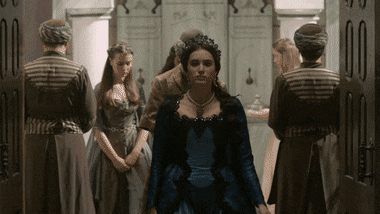
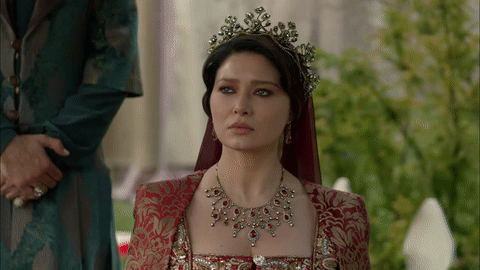
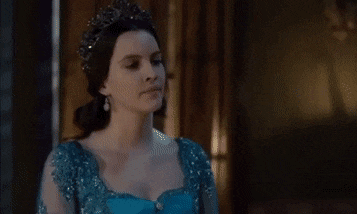

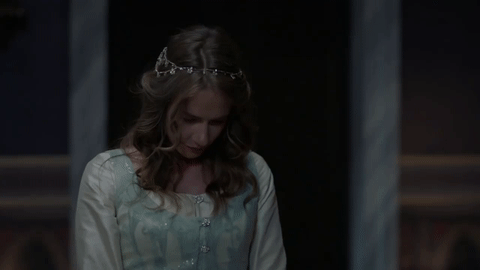
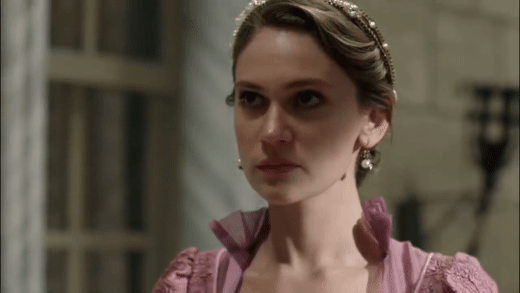




Women that give me bi panic from season 2 of Muhtesem Yuzyil: Kosem (Magnificent Century: Kosem):
1. Hande Doğandemir as Turhan Hatice Sultan
2. Nurgül Yeşilçay as Mahpeyker Kosem Sultan
3. Leyla Feray as Ayse Sultan
4. Ece Çeşmioğlu as Atike Sultan
5. Müge Boz as Humasah Sultan
6. Farah Zenyep Abdullah as Farya Sultan
7. Alma Terzic as Ester Hatun
8. Sezgi Sena Akay as Sanavber Hatun
9. Gunes Sayin as Kalika Hatun
10. Aslı Tandoğan as Gevherhan Sultan
#Ece Çeşmioğlu#burnaz atike sultan#atike sultan#mahpeyker kosem sultan#Kosem Sultan#nurgul yesilcay#farah zeynep abdullah#princess farya#farya sultan#Hande Doğandemir#Turhan Hatice Sultan#turhan sultan#leyla feray#ayse sultan#haseki ayse sultan#muge boz#humasah sultan#telli haseki humasah sultan#haseki humasah sultan#alma terzic#ester hatun#sezgi sena akay#sanavber hatun#gunes sayin#kalika hatun#Aslı Tandoğan#gevherhan sultan#muhtesem yuzil kosem#magnificent century kosem#not in any particular order
69 notes
·
View notes
Photo

Family of Kanuni Sultan Süleyman I.
#suleiman i#suleiman#süleyman i#süleyman#kanuni#kanuni sultan süleyman#kanuni sultan#hürrem#hürrem sultan#mahidevran#mahidevran hatun#Mahmud#mehmed#murad#Raziye Sultan#raziye#mihrimah#mihrimah sultan#ayse humasah#ayşe hümaşah#ayşe hümaşah sultan#hümaşah sultan#humasah sultan#aya hatun#hacipaşazadeler#sehzade mustafa#nergissah#Nergisşah Sultan#Şah#şah sultan
87 notes
·
View notes
Photo









Ayse Humasah Sultan
10 notes
·
View notes
Text






This headband was first worn by Hürrem Sultan in the sixteenth episode of the first season of Magnificent Century. It appeared three times in the second season, first on Nilüfer Hatun in the fourteenth episode, then on Nigar Kalfa in the twenty-first episode and lastly on Aybige Hatun in the twenty-second episode. The headband was also worn by Huricihan Sultan in the seventh episode of the third season. The piece also very briefly appears on Ayşe Hümaşah Sultan in the thirteenth episode of the fourth season.
#Muhteşem Yüzyıl#Magnificent Century#period drama#costume drama#historical drama#Hürrem Sultan#Hurrem Sultan#Nilüfer Hatun#Nilufer Hatun#Nigar Kalfa#Nigar Hatun#Aybige Hatun#Huricihan Sultan#Ayşe Hümaşah Sultan#Hümaşah Sultan#Ayse Humasah Sultan#Humasah Sultan#Ayşe Hümaşah Sultan (Daughter of Mihrimah)#Hümaşah Sultan (Daughter of Mihrimah)#recycled jewellery#reused jewellery
10 notes
·
View notes
Photo








Magnificent Century + names (6/12)
H (named aitch or haitch /eɪtʃ/, plural aitches) is the eighth letter in the ISO basic Latin alphabet.
#mc alphabet#muhteşem yüzyıl#muhtesem yuzyil#mc: kosem#magnificent century#magnificent century kosem#ayse hafsa sultan#halime sultan#handan sultan#humasah sultan#hurrem sultan#huricihan sultan#hatice sultan
85 notes
·
View notes
Photo






𝐭𝐡𝐞 𝐠𝐫𝐚𝐧𝐝𝐝𝐚𝐮𝐠𝐡𝐭𝐞𝐫𝐬 𝐨𝐟 𝐒𝐮𝐥𝐞𝐲𝐦𝐚𝐧 𝐭𝐡𝐞 𝐌𝐚𝐠𝐧𝐢𝐟𝐢𝐜𝐞𝐧𝐭
#history#historyedit#ottoman history#suleyman i#nergissah sultan daughter of sehzade mustafa#ayse humasah sultan#humasah sultan daughter of sehzade mehmed#ismihan sultan daughter of selim ii#gevherhan sultan daughter of selim ii#sah sultan daughter of selim ii#mihrimah sultan daughter of sehzade bayezid#hatice sultan daughter of sehzade bayezid#sah sultan daughter of sehzade mustafa#ayse sultan daughter of sehzade bayezid#hanzade sultan daughter of sehzade bayezid#fatma sultan daughter of selim ii#ottomanladiesedit
263 notes
·
View notes
Photo









Ayşe Hümaşah Sultan + Costumes (requested by anonymous)
#magnificent century#muhtesem yuzyil#mcedit#perioddramaedit#ayse humasah sultan#S4E139 The End of the Great Era#S4E133 The Blessing of the Enemy#S4E138 Silk Cord for Brother#S4E121 Everything Goes According to Plan#S4E134 The Last Days of the Great Sultana#mcs4#costume edits#requests#my edits
316 notes
·
View notes
Photo
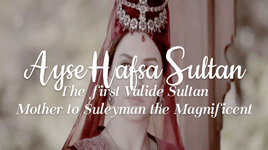



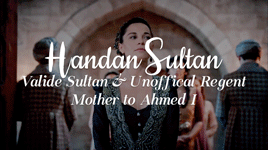


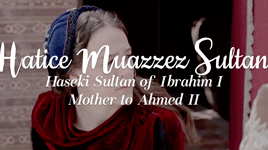

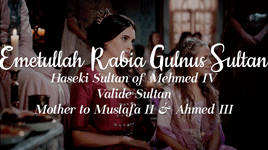
notable women who lived during the sultanate of women, but are not considered apart of it
#history#historyedit#weloveperioddrama#perioddramaedit#ayse hafsa sultan#Mahidevran Sultan#mahidevran hatun#ayse sultan#handan sultan#humasah sultan#kaya sultan#saliha dilasub sultan#telli haseki humasah sultan#hatice muazzez sultan#emetullah rabia gulnus sultan#Our edits#by Julia
219 notes
·
View notes